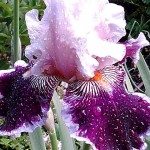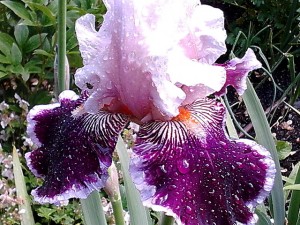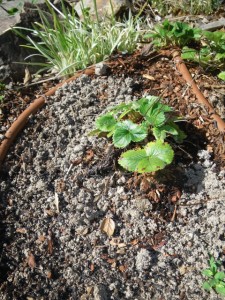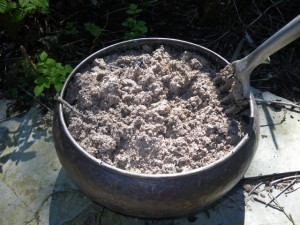
by Avis Licht
Just like humans, plants need food to grow well. Where we use protein, minerals and carbohydrates for fuel and growth, plants need nitrogen, phosphorus, potassium and a slew of micronutrients. Over the next few posts, I’ll be writing about different organic amendments. Before you add to the soil it’s important to know at least something about your own soil. Since most of us don’t know what is in our soil, here are a few ways to figure out a little about your soil.
You can buy a soil testing kit at your local nursery, or online at Gardener’s Supply. This is a simple and easy to use kit to find out the basics of your soil needs including nitrogen, phosphorus and potassium.
Existing plants, also known as weeds, are a good indicator of soil health and type. If you have lush plants, that are green and healthy looking, you can probably deduce that you’ve got fairly good soil. If plants seem small and stunted, this could mean several things. Compacted soil, low nutrient level or lack of water are the main culprits. This article on Weeds as Indicators of Soil Conditions will tell you much
more about plants as indicators.

For those who use a wood stove, wood ash is a free and excellent source of nutrients for the garden. There are some caveats, so listen up.
1. Wood ash is a source of potassium, lime and trace elements
2. Since wood ash is derived from plant material it contains most of the 13 essential nutrients that soil must have for plant growth.
3. When wood burns, nitrogen and sulfur are lost as gases, but calcium, potasium, magnesium and trace elements remain.
4.After wood burns it has liming agents which raise the pH, this neutralizes acid soil. That means if you have acid soil as in the Northwest of the United States, adding ash wood reduce the acidity. This is good news for some plants and bad news for others. Read on.
5. If you have acid loving plants like blueberries, rhododendrons, azaleas and gardenias you don’t want to use ash around them
6. Do use ash on flower beds, fruit trees, lawns and shrubs.
7. The fertilizer value depends on the type of wood you burn. As a general rule hardwoods like Oak produce 3 times more ash per pound of wood and contain 5 times more nutrients than soft woods like Douglas Fir.8. Use one half to one pound of ash per year for each shrub or rosebush.
9. Don’t leave ash in lumps or piles, it can leach too many salts in one place.
10.Use wood ash in compost piles to help maintain the best environment for micro organisms. Spread a little ash out in layers between adding weeds and kitchen waste to the pile.
11. Don’t use as on newly germinated seeds, it has too many salts for little plants.

 Follow
Follow



